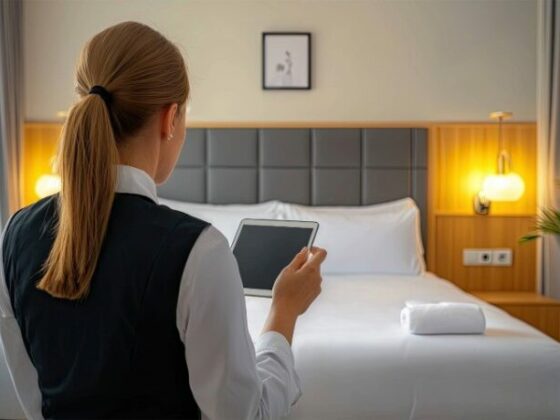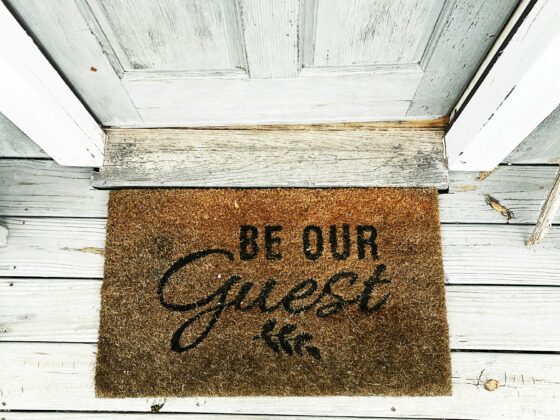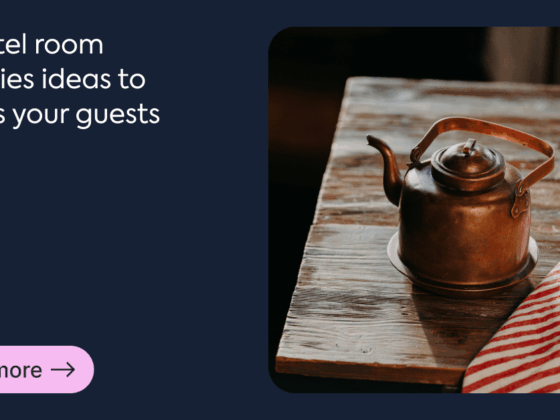
Ongoing economic shifts and AI advancements are increasing pressures for HR leaders to both retain top talent and recruit new hires who can thrive in a constantly changing environment. The first 90 days are more crucial than ever, with 77% of new hires stating that a strong onboarding experience plays a key role in their decision to stay with a company long-term. Additionally, the financial cost of hiring just one person makes it even more important to get onboarding right from the start.
An effective onboarding program isn’t just a learning experience; it’s a strategic initiative that supports engagement, performance, and long-term retention. Whether onboarding in-person, remotely, or across global teams, success requires Synchronous and Asynchronous learning formats, mentorship, collaboration, and role-specific development. When it comes to aligning hotel staff with critical business KPIs, such as guest satisfaction and operational efficiency, engagement is everything.
Aligning Onboarding with Business Goals
Starting an onboarding process with a solid grasp of the key performance indicators (KPIs) ensures that the program is aligned with measurable outcomes directly tied to broader business goals. That’s why successful onboarding must begin by building strong connections between the individual, their team, and the broader organizational mission. This creates a sense of structure without overwhelming new hires.

A key to this process is regularly scheduled one-on-one meetings. When new team members understand how their daily tasks directly align with company-wide goals, such as improving the guest experience or streamlining operations, they begin to see their role as essential. Communicating these connections early and often helps employees see that their work matters. When employees have a sense of purpose, it directly contributes to retention, service quality, and overall performance. Ultimately, the goal is to create an environment that’s conducive to various types of learning, helping new hires feel supported, understand their impact, and stay motivated to contribute to shared success.
Building a Strong Start
Research shows that new employees typically take around 12 months to reach their full potential within a role, yet onboarding is often viewed as a process requiring a quick turnaround. A well-structured onboarding journey takes time and should unfold over the course of a year that gradually tapers into a cadence that supports long-term development and integration. That’s why preboarding is just as important in the onboarding process.
In hospitality, where many new hires arrive with little to no industry experience, preboarding plays a critical role in setting the tone for success. Preboarding isn’t just about sending paperwork or basic instructions. It’s about having conversations that help new employees understand how they’ll fit into the team, both functionally and relationally. While assuming that most new hires will bring some baseline skills, expectations should still be clearly communicated and demonstrated through hands-on tasks. This provides time to identify knowledge gaps and build personalized training paths that develop confidence and competence over time. Effective preboarding should be integrated into the broader training experience. It’s not a standalone step; it’s the foundation of the onboarding journey.
In the hospitality industry, where guest experience hinges on service consistency and frontline performance, companies need a structured, engaging, and role-specific onboarding approach. This means clearly defined learning pathways, consistent brand messaging, and real-time feedback loops to keep new hires connected from the very start. CoSo Cloud, a learning experience design company that partners with hospitality organizations to create onboarding programs that do just that. These programs align business goals with tailored learning experiences that drive retention, elevate service, and accelerate time to impact.
Blend Synchronous and Asynchronous Modalities
Organizations should engage new hires early, setting clear standards and maintaining open dialogue from the outset to build trust, promote alignment, and minimize friction. This way, when incorporating eLearning programs via asynchronous learning tools, learning can be tailored to specific employees in a way that allows them to absorb key information at their own pace, revisit materials as needed, and begin contributing with greater confidence and clarity.
Incorporating the right eLearning tools enables onboarding to be intuitive and mobile-friendly, with just-in-time learning through microlearning, gamification, and visual content that seamlessly integrates into real-world workflows. Platforms like Adobe Learning Manager can support this with personalized training plans, virtual classrooms, and curated content aligned to role, region, and career goals. The most effective approach is a hybrid model: standardized systems for delivery paired with tailored experiences and manager-led coaching. Continuous feedback and analytics ensure onboarding isn’t just a start, but a strategic driver of retention, productivity, and culture.
Shaping Onboarding into Continuous Development
By rethinking onboarding as a long-term, personalized journey, organizations can equip new hires with the tools, confidence, and context they need to feel supported to thrive. When new hires are met with clear expectations, interactive and accessible content, and consistent support from both technology and leadership, they feel empowered from the start. With the right tools and mindset, companies can leverage onboarding into a continuous learning experience that improves retention, drives performance, and strengthens organizational culture.







